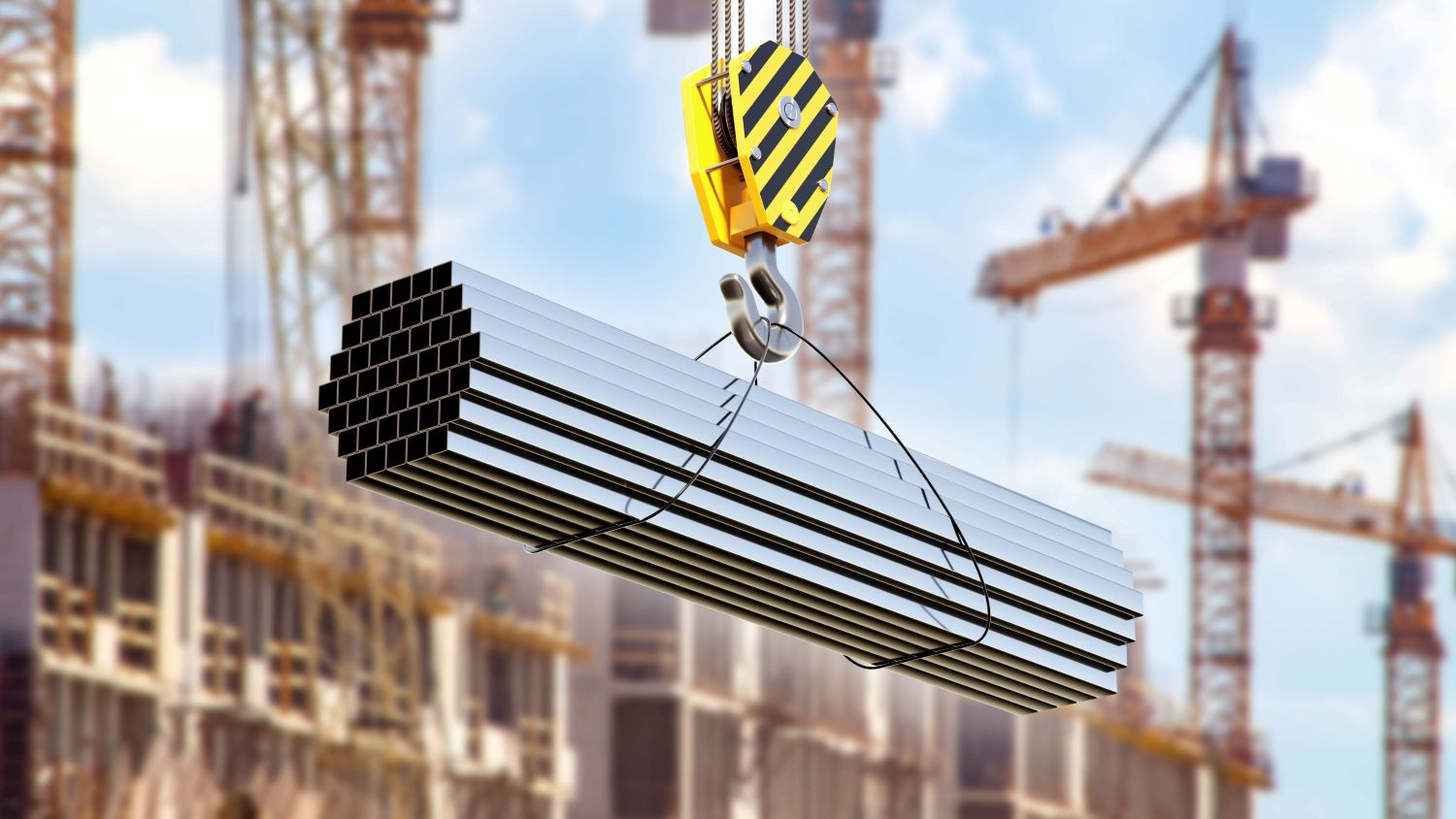What architects and engineers miss when they specify off-the-shelf materials
Despite the built environment's technological advancements, a pervasive reliance on "off-the-shelf" material specification is risking fundamental flaws in building performance. Experts warn that when architects and engineers overlook the nuanced properties and true lifecycle of materials, the consequences extend far beyond aesthetics, directly compromising a building's durability, sustainability and long-term functionality. This unaddressed issue demands immediate attention as the industry grapples with the true cost of treating vital components as mere commodities, writes John Ridgeway.
The very term "off-the-shelf" implies convenience, standardisation and immediate availability. It conjures images of efficiency, perfectly aligning with the pressures of modern project timelines and cost constraints. However, this convenience often masks a deeper reality. A material, even a seemingly mundane one, is not simply a static object - it is a complex entity with a unique biography, a distinct set of characteristics and a profound impact that extends far beyond its initial installation.
To truly understand a material is to comprehend its molecular structure, its origins, its manufacturing process, its behaviour under stress, its graceful (or otherwise) degradation over time and its ultimate fate at the end of a building’s life. Consider, for example, the seemingly universal material of concrete. Off-the-shelf concrete is often specified based on a generic strength requirement - a standard mix that meets a minimum structural capacity.
Yet, the nuanced language of concrete is far richer. Its performance is heavily influenced by the aggregate type, the water-to-cement ratio, the curing process and the presence of various admixtures. Specifying a generic mix might lead to issues like excessive shrinkage cracking, reduced freeze-thaw resistance in harsh climates, or an inability to achieve desired aesthetic finishes.
A thoughtful specification would delve into these details, perhaps opting for self-compacting concrete for intricate forms, high-performance concrete for extreme loads, or even incorporating recycled aggregates to reduce environmental impact. Missing these nuances means accepting an adequate solution when an optimal, more durable and more sustainable one is possible.
Choosing a real alternative
The same principle applies to timber. "Timber" off-the-shelf might simply mean a standard softwood grade. However, timber speaks a language of species, grain direction, moisture content, knot presence and growth region. A northern European spruce, grown slowly in colder climates, behaves differently from a fast-growing pine from a temperate zone. Its dimensional stability, resistance to fungal decay and aesthetic qualities vary significantly. Specifying without this knowledge might lead to undue warping, splitting, or a need for excessive chemical treatments. A discerning architect, listening to timber's language, would understand the benefits of cross-laminated timber (CLT) for its structural stability and carbon sequestration, or the beauty and durability of local hardwoods for specific interior finishes, embracing their natural variations and aging characteristics as part of the building's narrative.
The "hidden language" of materials also encompasses their lifecycle impact. Mass-produced, off-the-shelf items often come with a substantial, though invisible, environmental footprint. Their journey from raw material extraction, through energy-intensive manufacturing, to global transportation, often involves significant carbon emissions, water consumption and waste generation.
When architects and engineers merely tick boxes on a generic product list, they may inadvertently be supporting unsustainable practices. A more thoughtful approach involves delving into a material's embodied energy, its recyclability, its potential for reuse and the ethical sourcing of its components. For instance, choosing local, low-carbon bricks over imported ones, or specifying insulation with high recycled content, acknowledges this hidden language and contributes to a more responsible built environment. The true cost of a material isn't just its purchase price - it's its total impact from cradle to grave.
Furthermore, the cultural context and narrative of a building are often intrinsically linked to its materials. Off-the-shelf standardisation, while efficient, can lead to a homogenisation of architectural expression, stripping buildings of their unique sense of place. Traditional and vernacular architecture, by contrast, speaks volumes through its locally sourced materials - stone quarried from nearby hills, timber felled from regional forests, clay fired from local earth.
These materials do not just perform - they connect the building to its landscape, its history, and its community. When architects ignore this deeper cultural language, they risk creating structures that feel alien, disconnected, or soulless, merely fulfilling a functional brief without contributing to the rich tapestry of a place. The use of culturally insensitive or environmentally damaging materials, even if technically compliant, can undermine a project's acceptance and long-term legacy.
Using local materials
The issue of aging and weathering is another crucial chapter in the hidden language of materials. Off-the-shelf materials are often chosen for their initial appearance or ease of installation, with little consideration for how they will evolve over time. Will that pristine façade stain unevenly? Will that standard coating peel or discolour prematurely under specific climatic conditions? Will the material develop a patina that adds character, or will it simply deteriorate unattractively, requiring costly maintenance or replacement?
Architects and engineers who truly understand materials, envision their entire lifespan, specifying elements that will age gracefully, embrace the marks of time and continue to perform aesthetically and functionally decades into the future. This foresight prevents the creation of buildings that look dated or dilapidated long before their intended lifespan.

This shift towards specifying with more awareness is not about rejecting all mass-produced items - it's about making informed choices within that vast landscape. It involves asking critical questions. What specific performance characteristics do I truly need? What is the long-term impact of this material choice? How does it contribute to the story and identity of this place? Can I specify a variant that has lower embodied carbon, higher recycled content, or is locally sourced without compromising essential criteria? It demands a re-emphasis on material science and craftsmanship in architectural and engineering education, moving beyond generic categories to a deeper appreciation of material properties and manufacturing nuances.
For instance, consider façade systems. An off-the-shelf curtain wall might meet basic thermal and structural requirements. However, a deeper look into materials would involve understanding the specific composition of the glass (low-e coatings, solar heat gain coefficient, visible light transmittance), the thermal bridging properties of the frame material, the sealant longevity and the long-term maintainability of the cleaning system. A truly thoughtful specification might opt for a bespoke unitised system that precisely balances daylighting, thermal performance and buildability, optimising for specific site orientation and climate rather than a generic solution.
In a world increasingly concerned with resilience and adaptability, the choice of materials takes on even greater significance. Off-the-shelf solutions, designed for immediate utility, may not inherently possess the capacity to withstand future climatic shifts, evolving user needs, or unanticipated stresses. Materials specified with an understanding of their inherent adaptability, their potential for deconstruction and reuse, or their capacity to contribute to passive building strategies (e.g., thermal mass, natural ventilation) are far more resilient in the long run. This requires architects and engineers to become interpreters of materials' future potential, not just their present attributes.
Ultimately, the argument for moving beyond simplistic "off-the-shelf" specification is an argument for design integrity and responsibility. It acknowledges that every material choice carries implications - for the building's performance, its environmental footprint, its longevity and its relationship with its inhabitants and surroundings. It's an invitation for architects and engineers to rediscover the hidden language of materials, to listen to their stories, understand their potential and specify them with the wisdom and foresight that transforms mere construction into truly inspired and enduring architecture. By doing so, we move towards a built environment that is not only functional and efficient, but also deeply sustainable, contextually rich and profoundly resonant.
Additional Blogs

Are architects losing their influence in the digital era?
For decades, architects have been the central creative force in construction, shaping the buildings we see and the way projects are conceived, communicated and delivered. Their role has been...
Read moreWhy the word “Innovation” has lost its meaning in construction
“Innovation” has become one of the most overused terms in construction. It appears in the dozens of press releases we receive each day, conference talks and project reports, often without any real...
Read more

Retrofit fatigue and are we asking too much of old buildings?
As the world pushes toward net-zero emissions, the pressure to decarbonise our built environment is more intense than ever. Governments, developers and building owners are investing heavily in energy...
Read more